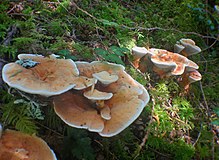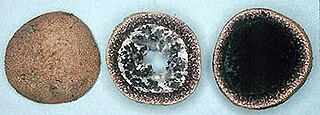
The Elaphomycetaceae are a family of fungi in the order Eurotiales. According to a 2008 estimate, the family contains two genera and 27 species.
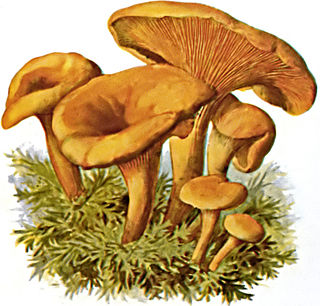
The Hygrophoropsidaceae are a family of mushrooms that are gilled in appearance but lie within the Boletales. The family contains 18 species within two genera: Leucogyrophana and Hygrophoropsis, with the best-known member being the "false chanterelle", Hygrophoropsis aurantiaca. Hygrophoropsidaceae was circumscribed by French mycologist Robert Kühner in 1980, with Hygrophoropsis as the type genus. Unlike most members of the Boletales, Hygrophoropsidaceae species are saprophytic wood-rotting fungi that cause brown rot in their hosts. The genera Austropaxillus and Tapinella, once placed in this family, are now classified in the Serpulaceae and Tapinellaceae, respectively.

The Gomphaceae are a diverse family of fungi belonging in what is classically known as the Phallales or cladistically as the gomphoid-phalloid clade. The family has 13 genera and 287 species.
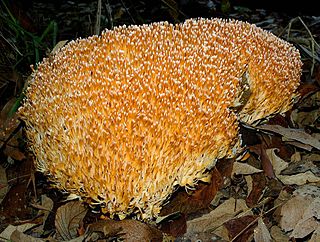
The Aphelariaceae are a family of fungi in the order Cantharellales. The family contains a small group of tropical and subtropical clavarioid fungi, but is not well characterized and has not been the subject of published research.

The Hydnodontaceae are a family of fungi in the class Agaricomycetes. According to a 2008 estimate, the family contains 15 genera and 105 species. It is the only family in the order Trechisporales.

The Hymenochaetaceae are a family of fungi in the order Hymenochaetales. The family contains several species that are implicated in many diseases of broad-leaved and coniferous trees, causing heart rot, canker and root diseases, and also esca disease of grapevines. According to a standard reference text, the family contains 27 genera and 487 species.

The Lachnocladiaceae are a family of fungi in the order Russulales. A 2008 estimate places 124 species in 8 genera in the Lachnocladiaceae. Species of this family, which have a widespread distribution in both tropical and temperate zones, are typically found on decaying coniferous or deciduous wood. The family was circumscribed by British mycologist Derek Reid in 1965.

The Sarcoscyphaceae are a family of cup fungi in the order Pezizales. Members of the Sarcoscyphaceae are cosmopolitan in distribution, found in both tropical and temperate regions.

The Mycenaceae are a family of fungi in the order Agaricales. According to the Dictionary of the Fungi, the family contains 10 genera and 705 species. This is one of several families that were separated from the Tricholomataceae as a result of phylogenetic analyses. Taxa in the Mycenaceae are saprobic, have a cosmopolitan distribution, and are found in almost all ecological zones. The family was circumscribed by Caspar van Overeem in 1926.

The Sarcosomataceae are a family of fungi in the order Pezizales. According to a 2008 estimate, the family contains 10 genera and 57 species. Most species are found in temperate areas, and are typically saprobic on rotten or buried wood.
The Acaulosporaceae are a family of fungi in the order Diversisporales. Species in this family are widespread in distribution, and form arbuscular mycorrhiza and vesicles in roots. The family contains two genera and 31 species.

The Niaceae are a family of fungi in the order Agaricales. The family contains six genera and 56 species. GBIF, accepted 10 genera and 278 species.
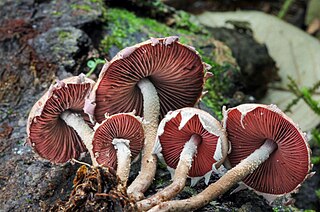
Melanophyllum is a genus of fungi in the family Agaricaceae. The widespread genus contains four species.
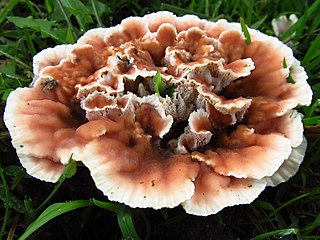
Abortiporus is a genus of fungi in the family Meruliaceae. The widely distributed genus contains three species. Species in the genus grow on the wood of hardwoods and conifers, either alone or around the stumps and living trees. It causes a white rot in dead wood and a white trunk rot in living wood. The genus was circumscribed in 1904 by William Alphonso Murrill. The generic name is derived from the Latin abortus and the Ancient Greek πόρος (pore).
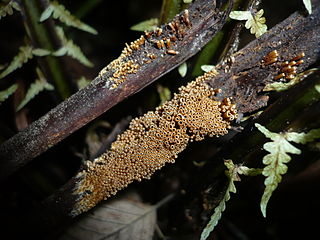
Woldmaria is a fungal genus in the family Niaceae. The genus is monotypic, containing the single species Woldmaria filicina, found in Europe and North America. Woldmaria was described by William Bridge Cooke in 1961, with Woldmaria crocea as the type species; it was subsequently moved into synonymy with W. filicina.
The Gallaceaceae are a family of fungi in the order Hysterangiales, containing species found in Australia and New Zealand. The family contains three genera and 16 species.
Hymenogloea is a fungal genus in the family Marasmiaceae. The genus is monotypic, containing the single species Hymenogloea riofrioi, found in tropical America.
The Pileolariaceae are a family of rust fungi in the order Pucciniales. A 2008 estimate places contains 4 genera and 34 species in the family.
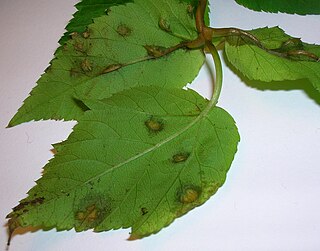
The Protomycetaceae are a family of fungi in the order Taphrinales. According to a 2008 estimate, the family contains 6 genera and 22 species.
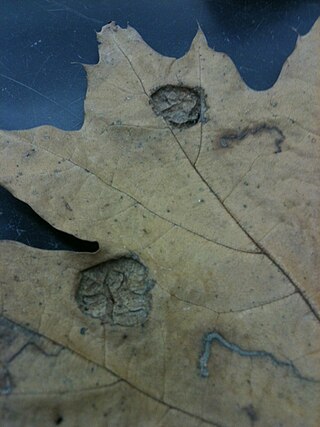
The Taphrinaceae are a family of fungi in the order Taphrinales. According to a 2008 estimate, the family contains 2 genera and 118 species.
